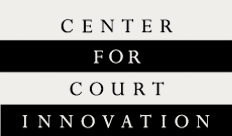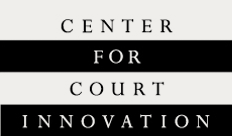National Snapshot of Innovation and Failure in Criminal Justice Reform
On July 10, the Center for Court Innovation in partnership with the Bureau of Justice Assistance and the U.S. Department of Justice released the study, Innovation In the Criminal Justice System: A National Survey of Criminal Justice Leaders. This study is a multi-faceted inquiry into the state of criminal justice reform throughout thecounty with an aim toward answering three basic questions: Is innovation a priority? Are criminal justice leaders aware of emerging research and do they use research to inform policy making? What obstacles stand in the way of innovation in the field?
The study is basedon a questionnaire which was administered from June to August 2012 among a sample of 1,000 professionals, including 300 community corrections officials, 300 leaders from prosecutors’ officers, 300 police chiefs and sheriffs, and all 102 chief judges and chief court administrators from the 50 states and the District of Columbia.
These are links to the full report and to selected highlights.
The following are some key-findings of the report organized by the four topical domains of the study.
 Prevalence of Innovation
Prevalence of Innovation
Respondents were more likely to rate themselves as innovative (72%) than their agencies (56%) or the field in general (33%). Two-thirds of respondents reported an experience with a criminal justice program or initiative that did not work (the most commonly cited reason being a lack of funding or staff). A majority either continued the failing program with changes (37%) or replaced it altogether (24%), while a minority simply stopped the program (24%) or continued it without changes (8%). The study shows a positive relationship between innovation and a proactive response to failure; those that reported engaging in more innovative practices were also more likely to report both an experience of failure and a response to failure that consisted of either changing or replacing the failing program, rather than continuing it unchanged.
Respondents were asked what specific programs they were most excited about. The answers were varied, but the most frequently cited programs were problem-solving courts, evidence-based practices, validated risk assessments, and technological advances.
Perhaps the most interesting findings centered on differences across agencies. Court administrators report a greater use of innovative practices at work than community correction officials, law enforcement officials, or prosecutors. Prosecutors are the lease likely to report the use of innovative practices.
Data-Driven Decision-Making
The Center for Court Innovation found reassuring evidence of a trend toward a more widespread reliance on evidence: 46% of respondents reported “always” using research or evaluation to guide programmatic decisions, while another 43% reporting “sometimes.” Exactly half reported they had used an external evaluator on at least one occasion.
Again, Court administrators report the greatest use of research (62% reporting that research and evaluation ‘always’ guide programmatic decisions, and 35% for ‘sometimes’) while prosecutors are the least likely to report that they relied on research and evidence (25% ‘always,’ 56% ‘sometimes’).
Again the study finds a strong relationship between use of research and innovation.
Barriers to Innovation
Barrier to innovation were measured on a four-point scale, with ‘4’ representing ‘strongly agree’ and ‘1’ representing ‘strongly disagree’. The most common barriers to innovation, according to respondents, are a lack of funding (3.28) and a lack of buy-in from frontline staff (2.93).
Sources of New Ideas
Respondents most commonly cited colleagues (85%), conferences (78%), and professional associations (77%) as sources of new ideas. Though 94% said they would be interested in reading a publication about criminal justice innovation.
We at Chicago Appleseed find the report’s conclusion quite encouraging. Critically, this report finds a positive connection between a reliance on research and evaluation with the level of innovation and proactive response to criminal justice reform. Those working for systemic reform in criminal justice matters should find this report quite useful in analyzing how agencies perceive the common barriers to innovation, how innovation can be encouraged throughout systems, and where to focus proposals for change that appeal to agency concerns and capacities.

